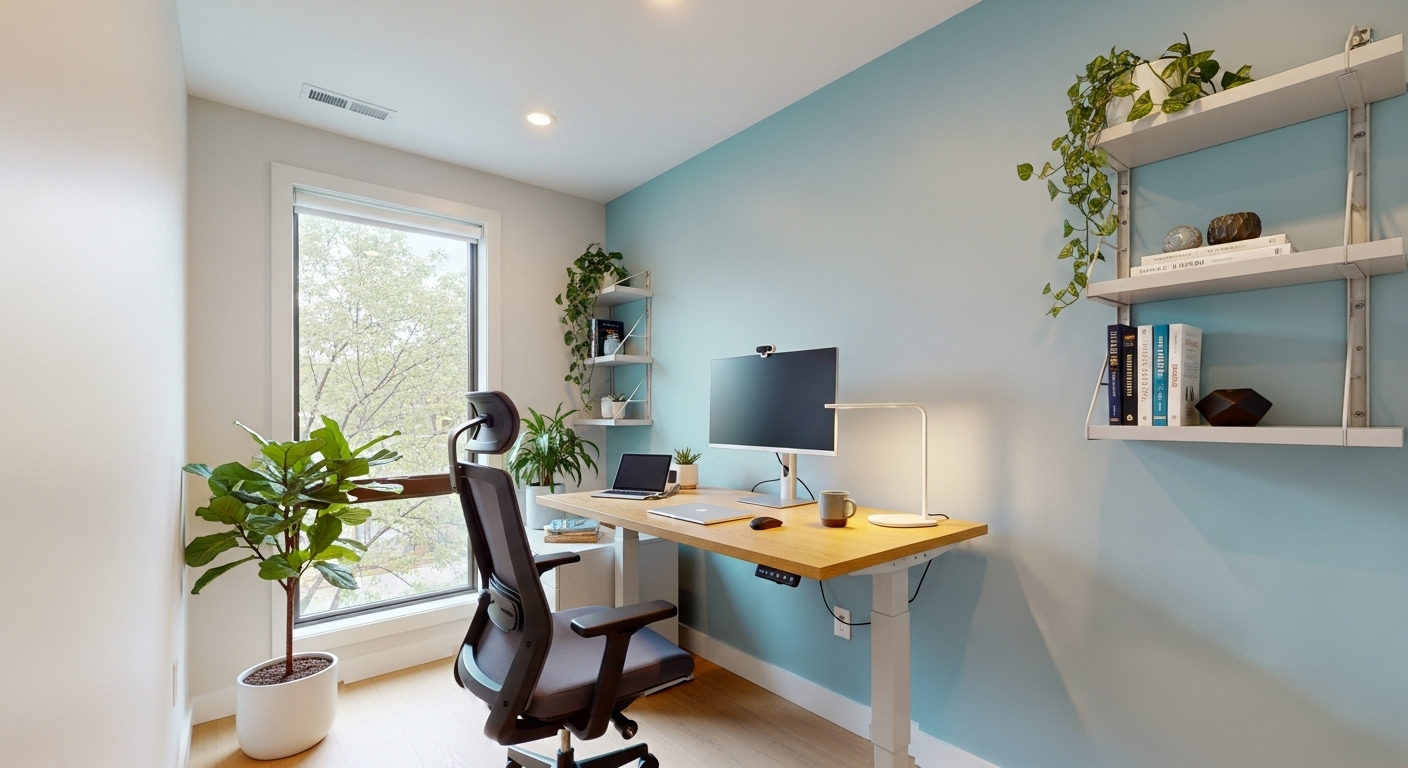The global shift to remote work has moved beyond a temporary measure to become a permanent fixture for millions of professionals. While the allure of flexibility and autonomy is strong, the reality is often a complex tightrope walk between productivity and burnout, connection and isolation. The old paradigm of work-life balance, a concept built on clear physical separation, feels inadequate. We need a new model: The Synchronized Self. This isn’t about balancing two opposing forces; it’s about integrating the spheres of your life into a cohesive, functional, and fulfilling whole. This holistic framework is designed to help you move from simply surviving remote work to truly thriving in it. In this guide, we will explore the essential pillars of this framework, providing actionable strategies to transform your remote experience. We will delve into structuring your physical environment, architecting a high-performance daily routine, mastering digital communication, nurturing your mental well-being, maintaining your career trajectory, and ultimately, future-proofing your professional life in an ever-evolving digital landscape.
Structuring Your Sanctuary: The Foundation of a Productive Home Office
The first step toward synchronization is creating a physical space that respects the psychological division between work and life. A dedicated workspace, even if it’s just a corner of a room, signals to your brain that it’s time to focus. This goes beyond simply having a desk; it’s about intentional environmental design. Start with ergonomics. An adjustable chair, a monitor at eye level, and an external keyboard and mouse aren’t luxuries—they are essential investments in your long-term physical health, preventing the strain and fatigue that can cripple productivity. Poor posture can lead to chronic pain, which directly impacts your ability to concentrate and perform. Beyond the essentials, consider the sensory inputs of your space. Natural light is proven to boost mood and regulate circadian rhythms, so position your desk near a window if possible. If not, invest in good quality lighting that mimics daylight to reduce eye strain. Control your auditory environment by using noise-canceling headphones to block out household distractions, creating a ‘cone of silence’ for deep work. The principle of separation is critical. When your workday is over, physically tidy your workspace and, if possible, leave the area. This act of ‘closing down the office’ creates a powerful mental boundary, allowing you to transition fully into your personal time without the lingering presence of work tasks.
The Rituals of Routine: Architecting Your High-Performance Day
With your physical space defined, the next layer of the framework is time. Without the external structure of an office commute and set break times, you are the sole architect of your day. This freedom requires discipline, which is best cultivated through routine and ritual. A powerful technique is the ‘virtual commute.’ Instead of rolling out of bed and directly to your laptop, create a morning routine that bookends the start of your workday. This could be a 20-minute walk, reading a chapter of a book, or meditating. This ritual serves as a mental buffer, preparing you for the professional mindset. Similarly, create an ‘end-of-day’ ritual to decompress and signal the transition back to personal life. For the workday itself, time-blocking is an incredibly effective strategy. Plan your day in advance, allocating specific blocks of time for specific tasks—from deep work sessions to checking emails and attending meetings. This prevents reactive, notification-driven work and puts you in control of your focus. Many professionals find success with the Pomodoro Technique: working in focused 25-minute intervals followed by a 5-minute break. This method promotes sustained concentration and prevents mental fatigue. Remember to schedule breaks for lunch, stretching, and simply stepping away from the screen. These are not signs of slacking; they are integral components of a sustainable and high-performance remote work structure.
Mastering Digital Body Language: Communication in a Distributed World
In a remote setting, your words, response times, and digital etiquette form your ‘digital body language.’ Misinterpretation is the default risk when non-verbal cues are absent, making conscious communication paramount. The key is to be clear, concise, and considerate. When using asynchronous tools like email or Slack, over-communicate to provide context. Don’t just write, “Can you look at this?” Instead, provide a summary, state the desired outcome, and specify the deadline. This proactive clarity saves time and reduces friction. It’s also vital to understand the difference between synchronous (real-time, like video calls) and asynchronous (on your own time, like email) communication. Reserve synchronous channels for complex, collaborative, or sensitive discussions. Default to asynchronous for status updates and general queries to respect your colleagues’ focus time. During video calls, combat ‘Zoom fatigue’ by being fully present. Turn on your camera whenever possible to build rapport, make eye contact with the lens, and use non-verbal affirmations like nodding. Acknowledging others’ contributions with a simple “Great point, Sarah,” can foster a more inclusive and connected atmosphere. Finally, establish clear expectations around your availability. Use your status on communication platforms to signal when you’re in deep work, on a break, or have signed off for the day. This manages expectations and reinforces the boundaries you’ve established for yourself.
Combating the Isolation Echo: Nurturing Mental and Social Well-being
The autonomy of remote work can be a double-edged sword, often leading to feelings of isolation and loneliness. The spontaneous ‘water cooler’ conversations and shared lunches of office life provided a crucial social fabric that must now be intentionally woven. Proactively scheduling social interactions is non-negotiable for mental well-being. This can be as simple as a 15-minute virtual coffee chat with a colleague with a strict no-work-talk rule. Some teams implement ‘donut calls,’ where members are randomly paired for informal chats to foster cross-departmental connections. It’s also important to combat the ‘always-on’ culture that leads to burnout. The right to disconnect is a critical boundary to enforce. Disable work notifications on your personal devices and set firm cut-off times. As researcher Cal Newport suggests in his book ‘Deep Work,’ developing a ‘shutdown complete’ ritual at the end of the day is crucial. This involves reviewing your tasks, making a plan for tomorrow, and saying a phrase like ‘shutdown complete’ to formally end your work responsibilities. This creates a psychological closure that allows your brain to truly rest and recharge. Remember to integrate non-screen activities into your life. Physical exercise, hobbies, and in-person social connections outside of work are vital counterweights to a day spent in front of a computer, creating a richer, more balanced existence.
Career Trajectory in a Virtual World: Proving Your Value and Pursuing Growth
A common fear among remote professionals is being ‘out of sight, out of mind,’ leading to stalled career growth. In a virtual environment, visibility is a product of proactive communication, not physical presence. You must become the primary advocate for your own work and development. Regularly and systematically document your accomplishments and share them with your manager. Don’t wait for your performance review; send concise, weekly or bi-weekly updates highlighting your progress on key projects, challenges overcome, and contributions to team goals. This keeps your value top-of-mind and provides a clear record of your impact. Seek feedback with intention. Instead of asking a generic, “How am I doing?” ask specific questions like, “What is one thing I could have done to make the last project report more effective for you?” This demonstrates a commitment to growth and provides you with actionable insights. Networking also requires a new approach. Actively participate in team channels, offer help to colleagues, and schedule virtual one-on-ones with peers and leaders in other departments. Building these relationships creates a support system and opens doors to new opportunities. Don’t neglect formal development; seek out online courses, certifications, and virtual conferences to keep your skills sharp and show your commitment to your craft. In a remote world, initiative is the currency of advancement.
The Future-Proof Professional: Adapting to the Next Wave of Remote Work
The landscape of remote work is not static. It continues to evolve with technological advancements and shifting corporate strategies. To thrive long-term, you must be adaptable and forward-thinking. The rise of hybrid models, where employees split time between home and office, requires a new level of coordination and flexibility. It demands excellent communication skills to ensure seamless collaboration between in-office and remote colleagues. Artificial intelligence is also set to reshape remote work, from AI assistants that can summarize meetings and draft emails to tools that analyze productivity patterns. Embracing these technologies as aids, rather than threats, will be a key differentiator. The most critical element of future-proofing your career, however, is a commitment to lifelong learning. The skills that are valuable today may be obsolete tomorrow. Dedicate time in your schedule for upskilling and reskilling. Follow industry trends, identify emerging technologies relevant to your field, and proactively acquire new competencies. This mindset of continuous improvement ensures you remain a valuable asset, regardless of how work structures change. The synchronized professional understands that adaptability is not a one-time fix but an ongoing practice, ensuring their career remains resilient and relevant in the dynamic future of work.
Ultimately, creating a fulfilling remote work life is an act of conscious design. The ‘Synchronized Self’ framework provides a roadmap, but you are the architect. It’s about moving away from the reactive posture of simply coping with remote work’s challenges and adopting a proactive stance of crafting an integrated life. By intentionally structuring your physical space, mastering your time through rituals, communicating with clarity and empathy, prioritizing your mental and social health, and actively steering your career growth, you build a resilient and sustainable professional existence. Thriving in this new era isn’t about finding a perfect, mythical balance; it’s about the daily, deliberate practice of synchronizing your efforts, your environment, and your well-being. It is about taking ownership of your routine and your career, transforming the flexibility of remote work from a challenge to manage into a platform for profound personal and professional success. The power to build this synchronized life rests entirely in your hands.





